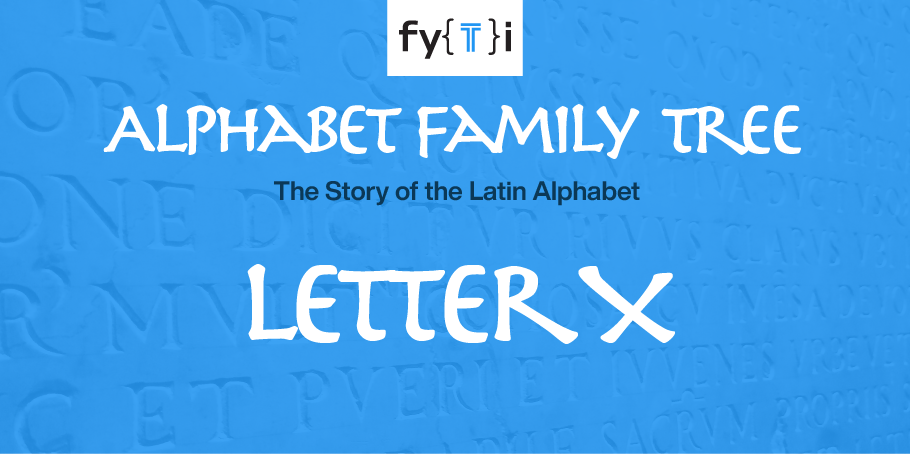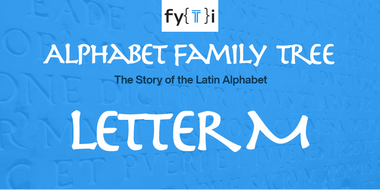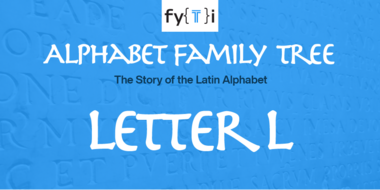Alphabet Tree - The Letter X

Some may think that the X is virtually an unnecessary letter. Fewer words in the English language start with X than with any other letter. Its sounds are easily rendered by the ‘z’ or ‘ks’ combination. The Phoenicians had no use for the ‘x’ sound, and many scholars contend that the Greeks did not use the letter to represent a phonetic sound. Even the Romans were not exactly sure where to use the letter, and stuck it at the end of their alphabet.
The Phoenician ancestor to our X was a letter called “samekh,” which meant fish. Although some historians argue that the character represented a post or support. With only a small stretch of the imagination, the drawn character can be seen as the vertical skeleton of a fish.

When the Greeks adopted the Phoenician alphabet they left some of the Phoenician sibilant letters behind, taking only those that represented sounds the Greeks required. The ancestor to our X, which represented a sharp ‘s’ sound, was one such letter. The Phoenician samekh became the Greek “xi,” which had different sound values in the Eastern and Western Greek alphabets.

Inconsistencies in the Greek pronunciation and usage of some letterforms were a direct result of geographical and political disunity. There were many Greek dialects and variations in letterform shapes and sound values, but the two main alphabet subgroups were the Ionic and Chalcidian. By 400 B.C., the Ionic alphabet, which had been officially sanctioned at Athens, became what we now know as the classical Greek alphabet. The Chalcidian, which was the alphabet of some Greek colonies that migrated to southern Italy, influenced several Italian writing styles, including Umbrian, Oscan and Etruscan.

The Romans appropriated the ‘x’ sound from the Chalcidian alphabet and represented it with the “chi” of the Ionic alphabet, which consisted of two diagonally crossed strokes. This letter became the prototype for both the capital and lowercase X we use today.


Xylo is a rugged, no-nonsense typeface that was originally released in 1924, by the Benjamin Krebs type foundry in Frankfurt am Main, Germany. It must have been very popular, because the design made it as far as England. In 1995, after finding the design in an old London printer’s reference book, the Letraset Type Studio faithfully converted Xylo into digital format. Xylo is now part of the ITC typeface library.

Download a pdf version of the Alphabet Tree - The Letter X and view the Xylo™ font family.


